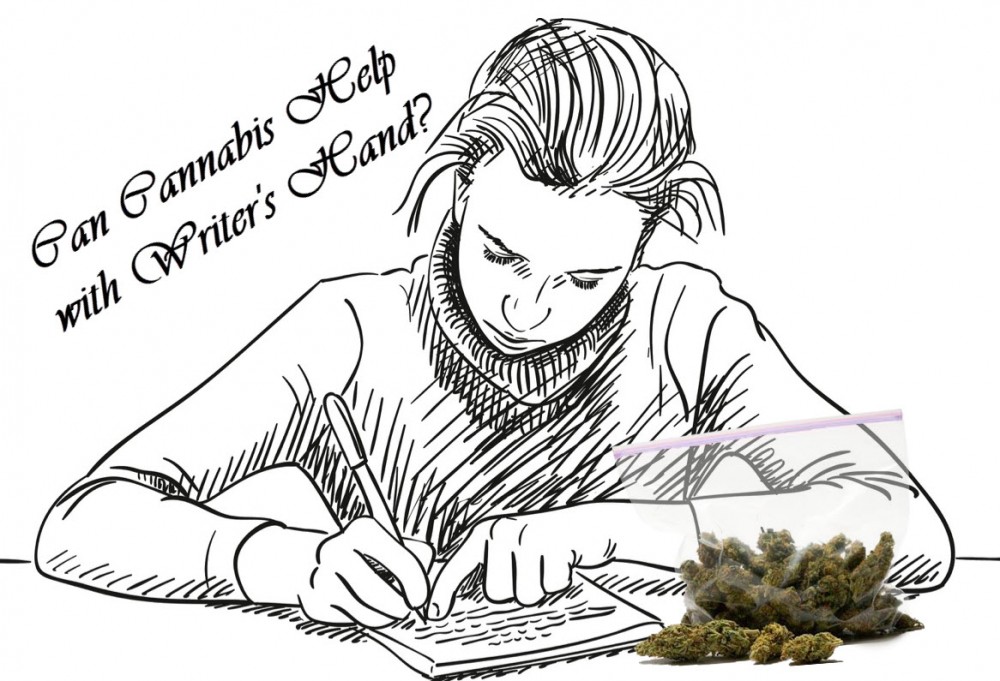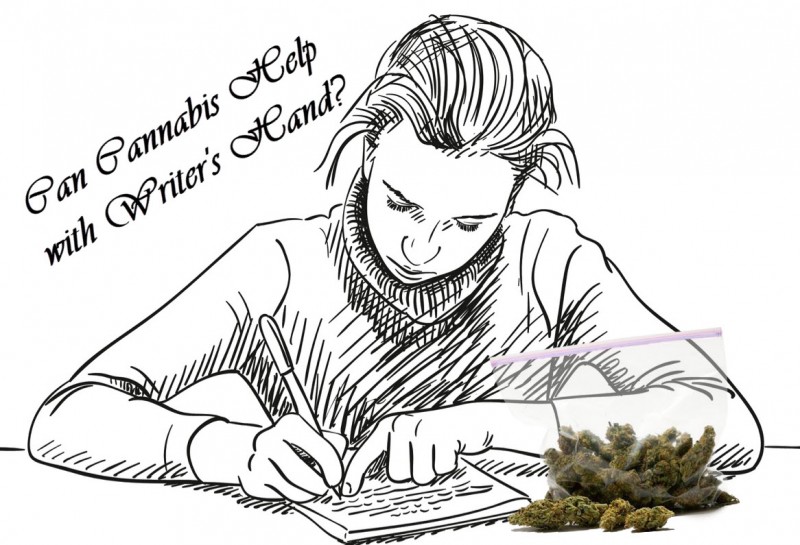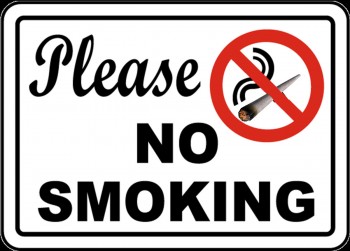Does Medical Cannabis Help for Writer’s Hand?

When a person uses his hand more than often for a specific task, it sometimes ends up cramping more than usual. It happens when a task repeatedly gets done like playing the piano, working on a computer, or typing. It is also known as focal dystonia and affects the fingers, hand, or forearm. The brain sends incorrect information to the muscles that result in involuntary, excessive muscle contraction. All of a sudden, the hand twists in awkward postures.
It is not easy to live with as it is very painful and interferes with physical and psychological levels. This type of dystonia mostly develops in adulthood. Even though there are many types of dystonia, this type of focal dystonia happens normally in one area.
What is Writer’s Hand?
Writer´s hand is clinically known as a type of dystonia. Dystonia is a movement disorder that affects the muscles. When you suffer from this disorder, you struggle with persistent or intermittent muscle contractions. These types of contractions are not normal and are repetitive and often looks just like a tremor. It often happens without a reason, but contractions can be caused by voluntary movements.
Writer’s hand is both a symptom and a disorder. This means that it can exist alone as multiple forms, but it can also be the symptom of other diseases. Some of the following names are used to describe this condition. They are:
Musician´s cramp
Focal hand dystonia
Arm dystonia
Finger dystonia
Task-specific dystonia
Occupational cramp or dystonia
The “yips”}
Are there different types?
Two basic types of writer´s cramp are identified. It can be divided in:
Simple Writer’s Cramp – there is only a difficulty involved when a person is writing. Abnormal postures and involuntary movements happen the moment a pen is picked up. It only affects the ability to write
Dystonic Writer’s Cramp- more tasks are involved because symptoms will show up at other activities other than writing too. An activity like shaving or putting on makeup could trigger involuntary movements. This type of dystonia can be categorized as the following:
Focal Hand Dystonia – when the hand is affected it often causes cramps, tremors, or involuntary movement during highly practiced hand motions. It is very task-specific.
Foot Dystonia – faulty signals from the brain can cause muscles to contract in the foot
Tardive Dystonia – this is normally a side-effect of taking medication to treat other conditions
Paroxysmal Dystonia – this is a rare type that happens in short attacks. There are no noticeable symptoms outside of these episodes
Voice and laryngeal dystonia – this condition affects the vocal cords causing spasms that the individual cannot control. The sound of the voice is often altered
Neck or cervical dystonia – this refers to muscle contractions in the neck that causes a lot of pain and uncomfortable postures
Blepharospasm – this normally happens around the eye that results in the involuntarily closing of the eyelids
What are the Cause and Symptoms?
Even though it is called Writer´s Cramps, it does not mean that it is exclusive to writing. Anyone can develop this condition. Specific motion and movement increase dystonic symptoms. It eventually gets very painful and hard to perform the aspired task at hand.
There are a variety of symptoms present that can be a mild discomfort to a severe disability to perform the task. The physical symptoms include the following:
Excessive gripping of an object like a pen or a piece of cutlery
Decreased speed or accuracy in writing or performing other tasks
Wrist flexing
Involuntary muscle contractions
Extension of the fingers that cause loss of grip of the object
Retracting the arm while writing or performing specific tasks
Elevating the shoulders while performing a specific task
A rare case of tremors, cramping or aching in the hands or fingers
These primary symptoms are normally an indication of the conditions, but other conditions like spasms, jerks, stiffness, tension, fatigue, and pain could also be included.
How Can Cannabis Help?
Medical marijuana is a viable choice to treat Writer´s Cramps. Cannabis is able to treat muscle spasms, muscle cramps, and muscular pain. Apart from the physiological problems, a person suffering from this condition could also have psychological issues. When a person cannot do a task that is necessary for quality life, might struggle with anxiety, depression, and stress due to the condition. Cannabis is also helpful for that.
Cannabis is effective in treating neurological disorders. It has shown to reduce muscle spasticity in conditions like multiple sclerosis and other related disorders. Medical cannabis would be able to reduce the severity of the condition.
Best ways to use Cannabis to treat the condition
There are a variety of methods available to treat Writer’s Cramps. Tinctures and oils can be used sublingually, and edibles in a microdose are also effective. Vaping and smoking could also bring relief.
CANNABIS AND CONTACT, OR NOT, READ MORE...
ARE CONTACT HIGHS REAL, CHECK THIS OUT!
OR..
DO CANNABIS CREAMS AND RUB WORK? CLICK HERE.







